About Labubus
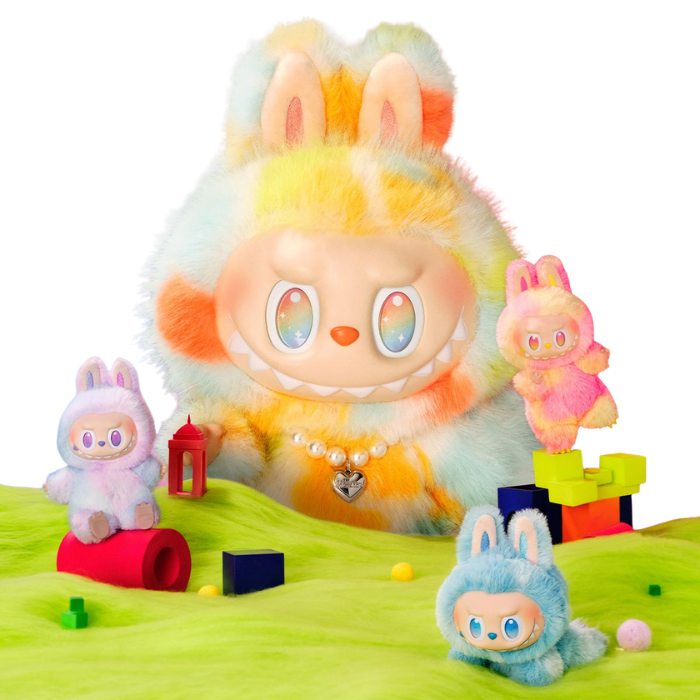
Who is Labubu?
Labubu is the mischievous, elf-like character at the heart of The Monsters, a whimsical universe created by Hong Kong-born artist Kasing Lung. With her wide grin of exactly nine serrated teeth, tall pointed ears, and scruffy little body, Labubu is instantly recognizable. She may look fierce at first glance, but in her stories she is kind-hearted and always wants to help, even if her efforts often cause a bit of chaos.
Although Labubu has become the face of the franchise, she is just one member of The Monsters, a tribe that also includes Zimomo (the leader with a tail), Tycoco (her skeleton-looking boyfriend), Spooky, Mokoko, and Pato. Together, they form a modern mythology that blends playful mischief with charm and emotional resonance.
Since her debut in 2015, Labubu has appeared in every form imaginable, from tiny keychains to 31-inch vinyl figures. By 2025, more than 300 unique variants had been produced, cementing her as one of the most collectible toy characters in the world.
Origins and Creation
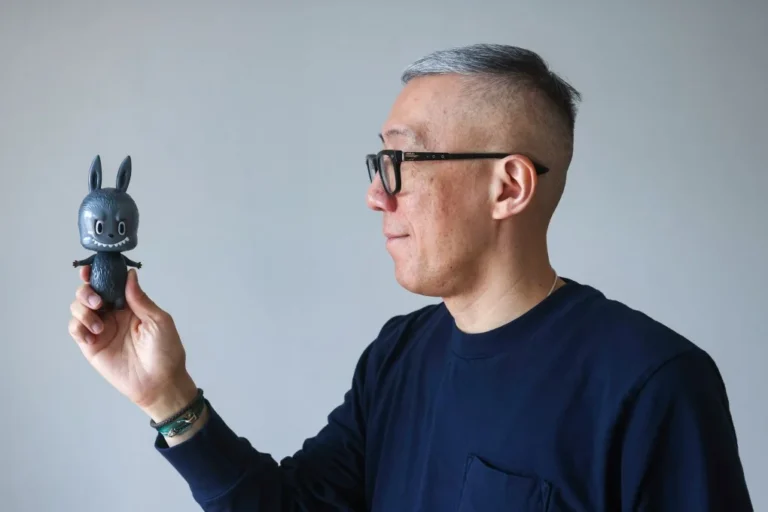
Labubu was conceived in 2015, when Kasing Lung began sketching the character in his notebooks. She soon appeared in his illustrated children’s books, which he calls The Monster Trilogy. In those early stories, Labubu was not the star but rather a background character, often hiding behind trees or under furniture, part of a clan of one hundred.
The inspiration for Labubu comes from Lung’s own childhood in the Netherlands, where he fell in love with Nordic folklore, elves, trolls, and forest spirits. Without video games or computers, he spent much of his time reading fairy tales and drawing. He was also influenced by the Belgian Smurfs, the Finnish Moomins, and wuxia novels by Louis Cha (Jin Yong), which helped him learn Chinese. All of these influences combined into what Lung calls a modern-day mythology, a way to reimagine the magical creatures of folklore for today’s world.
Before Labubu became a toy, Lung built his career as a children’s book illustrator in Belgium, where he became the first Chinese artist to win the country’s Illustration Award. In 2010, he shifted into toy design, and by 2012 he was collaborating with the Hong Kong brand How2work to release picture books and collectible figures.
From Sketchbooks to Global Phenomenon
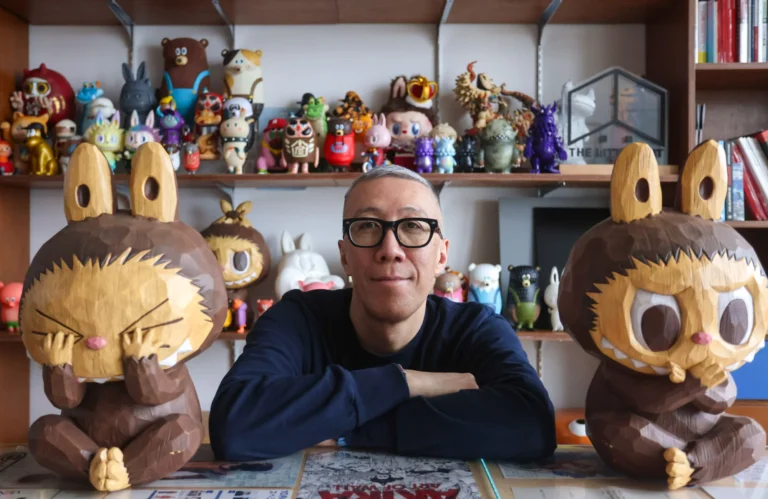
Labubu’s early figures were produced by How2work starting in 2015, but the character’s breakthrough came in 2019 when Lung signed an exclusive licensing agreement with Pop Mart. This Beijing-based company is known for its “blind box” strategy, where buyers don’t know which figure they’ll get until the box is opened. The combination of surprise, scarcity, and distinctive design turned Labubu into Pop Mart’s best-selling franchise almost overnight.
The global craze hit a fever pitch in April 2024, when Lisa from BLACKPINK posted photos of her Labubu dolls online. Celebrities from Rihanna to David Beckham were soon seen carrying them, and demand surged across Asia, Europe, and beyond. By mid-2024, sales had tripled Pop Mart’s profits, generating the equivalent of nearly US$870 million in just six months.
Labubu’s appeal lies in what fans call her “hard-to-explain cuteness,” ugly and huggable at the same time, with a devilish grin that feels both playful and brave. For Lung, she represents childhood mischief and vulnerability: “some things I wanted to do but didn’t dare to do.”
Cultural Reach and Recognition
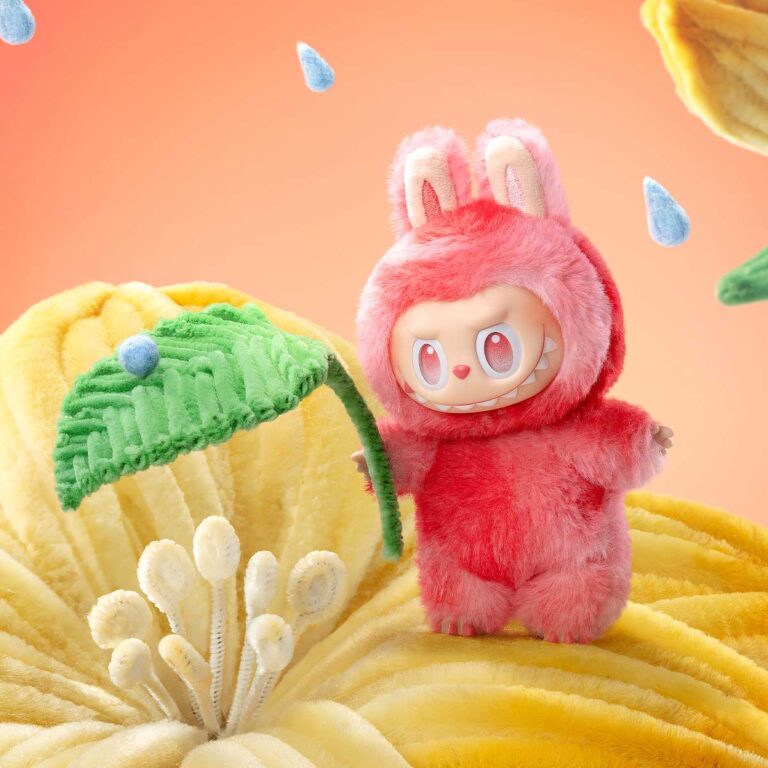
The Labubu craze has spilled far beyond toy shops. The character has been featured at Art Basel Hong Kong (2025), appeared in political promotions in Singapore, and even joined religious festivals, with temples dressing her in ceremonial outfits to attract younger generations. Lung’s original artwork featuring Labubu has sold for as much as HK$330,200 at auction, and his exhibitions continue to blend the worlds of toy culture and contemporary art.
Labubu has also been described as a symbol of Chinese soft power. State news agency Xinhua noted that the toy “shows the appeal of Chinese creativity, quality, and culture in a language the world can understand.”
Controversies and Challenges
With global popularity came criticism and debate.
In mid-2024, a viral TikTok claimed Labubu’s sharp grin and pointed ears resembled Pazuzu, a demon from Mesopotamian myth and The Exorcist. Some religious groups called the toy “demonic.” Cultural analysts quickly dismissed the theory, pointing out Lung’s documented inspiration in Nordic folklore and children’s fairy tales.
Other controversies have centered around psychological concerns. Russia’s Federation Council proposed banning Labubu for being “too frightening,” while Iraq’s Kurdistan Region seized over 4,000 dolls, claiming they contained “demonic spirits.” No evidence supported these claims, but they highlight how differently cultures interpret Labubu’s mischievous design.
The blind box marketing model has also been criticized for encouraging overconsumption and dependency, as collectors chase rare figures. This frenzy has sometimes spilled into real-world conflict: Pop Mart’s website has crashed under demand, and reports of customers fighting over dolls led the company to pause UK sales in 2025.
Counterfeits, nicknamed “Lafufus,” are another growing issue. Fake dolls are often nearly identical at first glance, but collectors know to look for details: nine teeth, even stitching, and the “O Kasing” engraving on the foot. Pop Mart has launched lawsuits and customs seizures to combat the fakes, though ironically, some fans collect them for their odd variations.
The Artist Behind the Monsters
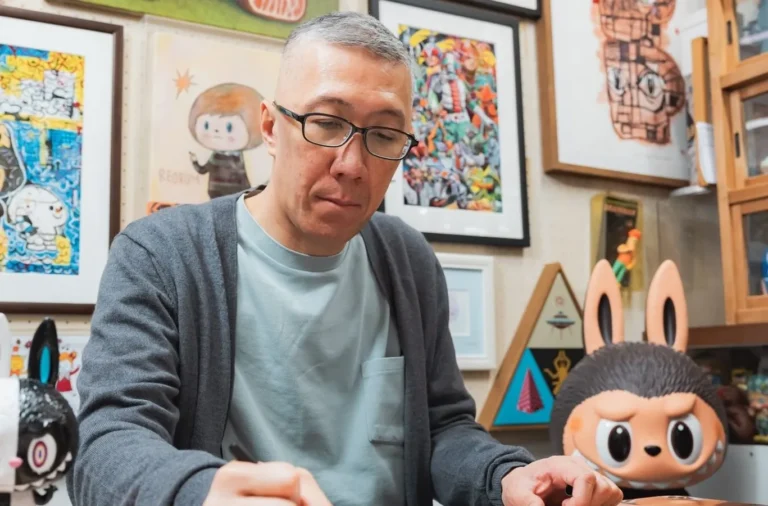
Kasing Lung, born in Hong Kong in 1972, moved to the Netherlands at age six or seven, where his parents ran a restaurant. Struggling with Dutch, he learned through picture books, which sparked his lifelong love of illustration. His art reflects the stories and characters that shaped his youth, Nordic elves, The Smurfs, The Moomins, and wuxia heroes.
Lung has always seen his work as about more than toys. For him, Labubu is a way to tell stories, express vulnerability, and reconnect with playfulness. Today, he splits his time between Antwerp, Belgium, where his wife and daughter live, and Hong Kong, maintaining studios in both cities. His exhibitions and toys alike reflect what he calls the “beautiful strangeness of being human.”
Labubu is Beloved by Millions
From a mischievous elf scribbled in a sketchbook to a global icon carried by pop stars, Labubu has become one of the most recognizable collectible figures of the 21st century. She represents the fusion of folklore, art, and consumer culture, beloved by millions, misunderstood by some, and always at the center of conversation.
Sources
- Kasing Lung, the artist behind Labubu via Bangkok Post
- An unexpected link between Hong Kong’s Louis Cha ‘Jin Yong’ and Labubu doll by Denise Tsang
- Going ga-ga over Labubu: The toy that has fans fighting, faking and stealing it by Natasha Ann Zachariah
- Labubu Origins: How Pagan Mythology Gets Distorted, Once Again by Rose Burke
- Kasing Lung: The Artist Behind the Internet’s Favourite Monster, Labubu via TheArtGorgeous
- Labubu and The Monsters: A guide to Kasing Lung’s creations via Lifestyle Asia
- Adorable or just weird? How Labubu dolls conquered the world by Fan Wang, Adam Hancock
- Story of Labubu’s father: HK artist Kasing Lung via Our China Story
- The Monsters: 10 Things To Know About The Beloved Labubu via bagaholicboy
- What is Labubu? Why is she so popular? We have answers. by Rebecca Rodriguez
- Why Are People Lining Up for Labubus? An Expert Breaks Down the Pop Culture Craze by Sara Bock